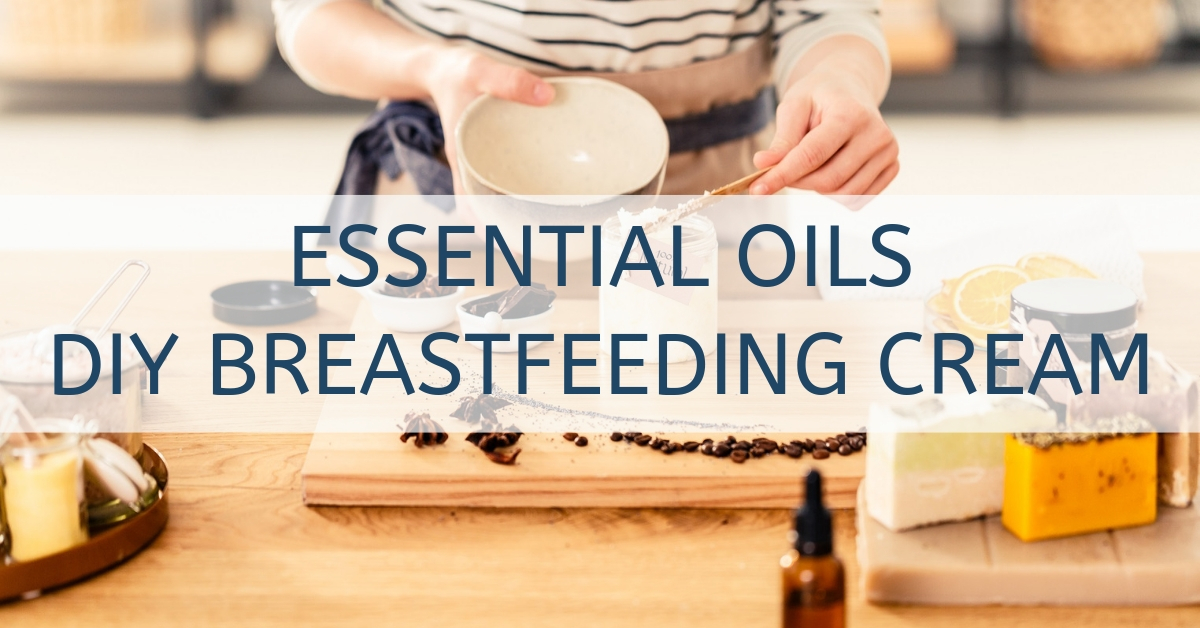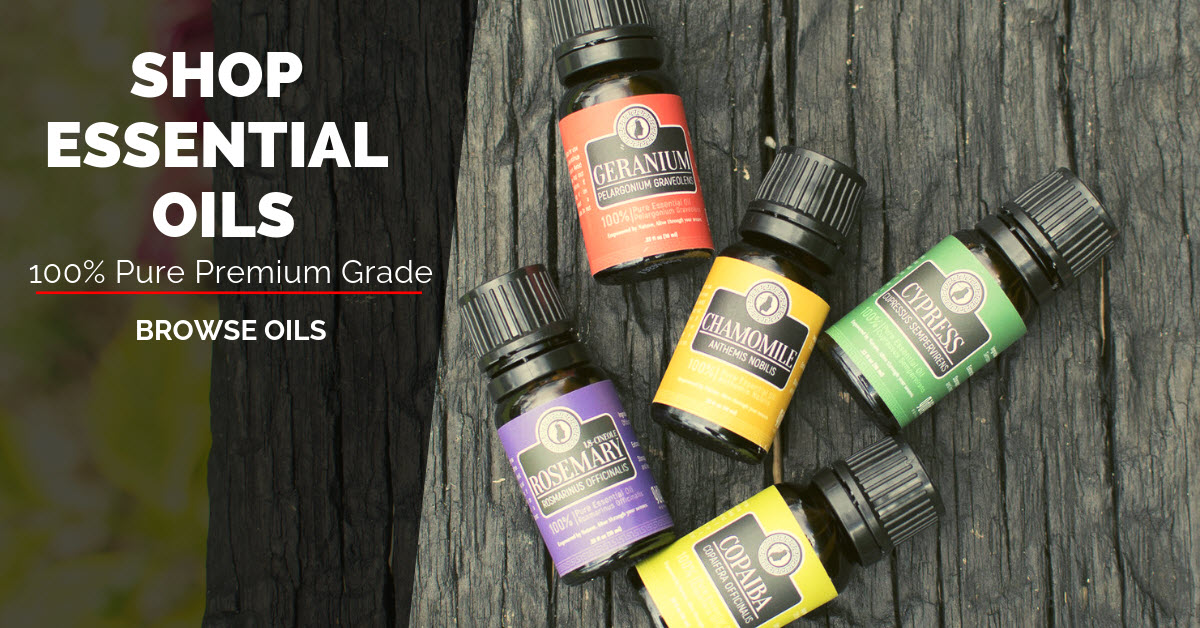For the most part essential oils are safe for breastfeeding, as long as you keep the dilution very low. I would stay as small as just 1%, and only really if needed.
Babies navigate the world through smell and their relationship with mum is quintessentially intertwined with their experience of aroma.
Using strong fragrances can deeply disturb his reassurance. Remembering this sets the tone for using essential oils to help your breastfeeding. To find out more about this please visit this post on essential oils for infants.
Whilst breast feeding is the most natural and beautiful thing a woman can do, it can be fraught with difficulties.
Perhaps the milk does not come in quickly. Baby does not latch on. Nipples become cracked and sore and infections and abscesses are not uncommon.
Breastfeeding is not easy, but essential oils make it easier to survive those precious but sometimes challenging days.
Essential Oils Will Flavor Your Breast Milk
Another relevant point not addressed in that article is how essential oils travel through the skin, circulate via the bloodstream and then end up in the breast milk.
This can be extremely useful, but the fundamental thing to remember is just as a curry will change the taste of baby’s milk, so will your essential oils.
If baby decides not to latch on or decides he does not want to eat, the first thing to do is immediately stop using your oils and see if that changes. It may be that once the taste alters you seem far more attractive to his palette.
Lack of Supporting Evidence
Here aromatherapy lives a little in no man’s land, because there is a dearth of high quality clinical trials about using essential oils for breastfeeding [1], much of the knowledge women have today comes from generations of medicine-women and midwives passing down their wisdom.
Herbalists have long prescribed foods such as fenugreek and celery to encourage milk production.
Where we do have essential oils from these foods, to be honest it is easier, less expensive and probably just as efficient to eat the whole food rather than use the oil.
That said if you are creating a breast cream to care for and boost your mammaries, then, of course, add a drop in.
Caring For Your Breasts
Celery Seed (Apium graveolens)
As ever, where essential oils do not have side effects, only many main effects, we might expect that you may also go to visit the toilet more often, because of its diuretic properties.
Ensure that you drink copious amounts of water to replenish the supply for milk production.
It is also a very calming oil, both emotionally and digestively, so this would be a good oil to try if baby is not sleeping or becomes a little colicky.
Just one drop in a blend will be adequate.
Fenugreek (Trigonella foenum-graecum)
There are pros and cons for using this oil. It has been used in Ayurvedic Medicine for centuries to promote breast milk, which it most certainly does efficiently [2], after about a week of use.
Another interesting effect though is it shows promise as a weight loss agent as it seems to speed metabolism [3].
The downside…or upside …depending on your bra size at the time is that it is also thought to enlarge the breasts.
If you are already supporting a pair of bowling balls that will take someone’s eye out, you might want to avoid this one.
Safety: Not suitable for use during pregnancy.
Clary Sage (Salvia sclarea)
Clay sage has a mysterious relationship with the human body in that it mimics oestrogen. We avoid it until the very latest stages of pregnancy because it encourages oxytocin to be produced which in turn strengthens contracts. In a slow progressing labor, clary sage is a powerful ally.
Exciting research done in 2017 by St Luke’s maternity home in Japan showed that the body is so receptive to clary sages influence, that simply inhaling the oil would show improvements in the levels of oxytocin in the blood [4].
Oxytocin is a hormone that acts like a neurotransmitter.
In other words, it sends signals to the brain to ask it to do something. In this case it instructs the brain to send more milk down. It is secreted when we feel bonded to someone or something. One might call it the neurotransmitter of love, because levels rise when we hold hands, hug or make love. Importantly here, breastfeeding triggers its release.
When levels of oxytocin are high, milk will continue to be sent down even when baby is not feeding.
So again, we could add a drop of this to our breast cream, but likewise simply inhaling for five minutes three times a day not only stands a good chance of improving breast milk production but will also radically reduce mum’s feelings of stress over a frustrating and upsetting situation of poor milk supplies.
Safety: Not suitable for use during the first 37 weeks of pregnancy and do not mix with alcohol.
Engorged Breasts and Mastitis
Ah yes, I remember it well.
Lying in a bath with these raging hot beasts, rock hard and painful. They were excruciating and if you have never had it happen to you, let me tell you, it’s a bit like toothache in that you cannot get away from the pain. It occupies every single thought and the heat that comes of them could power a nuclear reactor.
Worry not…
Luckily, the solution is an oil that is cheap and easily available from your local health store.
Geranium (Pelargonium graveolens)
I can’t say enough good things about this oil but here… let’s just say….
Aaaahhhh
Bliss.
Now here, you need some help with baby. You need time to yourself to relax and enjoy the treatment. It’s a well-deserved bit of me time that will help you wind down from the agony and pain of the b[r]easts.
The best secret is to use geranium essential oil in hot and cold compresses.
This rotation of compresses is a very useful trick for any condition where you want to draw whether that be toxins, pus or milk.
The cold closes up pores then the warmth opens them up again so what you get is a suction effect that draws fluids and small solids up to the surface and out.
Fill the basin with cool water, drop in five drops of geranium essential oil and soak two face cloths then wring them out.
Place the cloths onto your breasts and leave to cool for five minutes.
Meanwhile soak the next cloths in another bowl of water, but this time make it just above hand hot.
Replace the cold cloths into cold water and replace the warm cloths on to your breasts.
Repeat the cycle for about five rounds.
Essential Oils for Cracked Nipples
Calendula Carrier Oil (Calendula officinalis)
This beautiful marigold is so kind to skin. Treat yourself to a bottle of carrier oil to blend into creams, for your nipples but also baby’s chapped bum. Nappy rash doesn’t stand a chance against calendula.
What’s nice about this one, is marigolds are edible and the petals are often found in pretty salads at the top restaurants, so in this case it’s not too horrible for baby to taste either
Myrrh (Communis myrrha)
If you read ancient scriptures and documents, the beautifully fragranced spice is always referred to in the same way “The bitter taste of myrrh…”
This is the absolute best healer to skin that is broken, but it tastes like the devil’s armpit.
If the nipple gets very injured and starts showing signs of infection or worse begins to ulcerate, it is worth adding a tiny spot of oil to the cream, or even better spritzing the nipple with a myrrh hydrosol. Likewise this is a wonderful oil to choose if there is mastitis forming.
Hydrosols are the secondary part of the distillation used to extract the essential oil from the plant matter. Because oil and water don’t mix, the essential oil floats on top of the water, but tiny molecules of the oil remain in the hydrosol as well as the constituents on the plant matter that are water based rather than oily. Therefore, hydrolats offer a gentler but often just as efficient healing mechanism as the essential oil themselves.
Safety: Not suitable during the first 37 weeks of pregnancy
That said…
I still can’t imagine it being a gastronomic delight, so use immediately after feeding to give the oils chance to absorb away from the surface of the nipple.
Bonus Recipe – DIY Breastfeeding Cream
This cream is designed with the full set of issues in mind. It has gently nurturing geranium to protect, nurture and cool the breast. Some spikenard hydrolat to cool and tend the breast even further. It has celery seed to encourage the mild and a tiny drop of myrrh to keep the nipple clean and intact.
Since it is created as a larger recipe, I have used weights rather than the usual drops method to avoid issues with accuracy of dilution.
Breast Feeding Essential Oils Cream
- 250g Aqueous Lotion
- 25g Spikenard Hydrolat
- 20g Calendula Carrier Oil
- 1g Geranium Essential Oil
- 1g Celery Seed Essential Oil
- 0.5g Myrrh essential Oil
Add the hydrolat to the aqueous lotion and whisk well. Then add the essential oils to the carrier and stir until well blended
Use on the entirety of the breast after feeding.
Safety: No safety concerns however stop using on the nipple if baby seems as if he may not like the taste. Since essential oils absorb through the skin, they will still continue to do their job, albeit slower.
The Bottom Line
- Use small dilutions of essential oils to protect the breast and encourage milk .
- Follow the suggestions in this article for breast care or when encountering swollen breasts or cracked nipples.
Read more:
- Essential Oils Safe For Kids? Here’s What You Should Know.
- Essential Oils and Pregnancy – Is It Safe?
Works Cited
[1] A Review of Herbal and Pharmaceutical Galactagogues for Breast-Feeding. Bazzano AN1, Hofer R1, Thibeau S2, Gillispie V3, Jacobs M1, Theall KP1. s.l. : The Ochsner Journal, 2016, Vol. Winter.
[2] Effectiveness of fenugreek as a galactagogue: A network meta-analysis. Khan TM1, Wu DB1, Dolzhenko AV1,2. s.l. : Phytotherapy Research, 2018, Vol. December.
[3] A small plant with big benefits: Fenugreek (Trigonella foenum-graecum Linn.) for disease prevention and health promotion. Nagulapalli Venkata KC1, Swaroop A2, Bagchi D2,3, Bishayee A1. s.l. : Molecular Nutrition and Food Research.
[4] Changes in salivary oxytocin after inhalation of clary sage essential oil scent in term-pregnant women: a feasibility pilot study. Tadokoro Y1, Horiuchi S2,3, Takahata K4, Shuo T5, Sawano E6, Shinohara K6. s.l. : BMC Research Notes , 2017.



